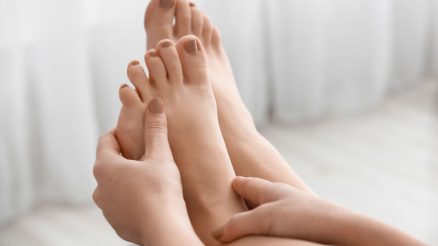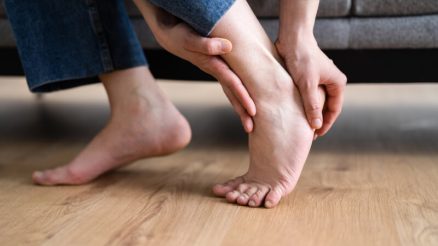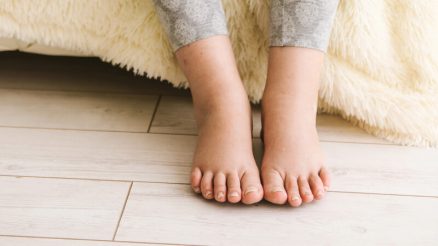Achilles bursitis, also known as retrocalcaneal bursitis, is an inflammatory condition affecting the small fluid-filled sac (bursa) located between the Achilles tendon and the heel bone. This bursa acts as a cushion to reduce friction during movement, and when inflamed, it causes pain, swelling, and stiffness in the heel and ankle. While rest, ice, and anti-inflammatory treatments are important in the initial stages, targeted exercises play a critical role in rehabilitating and healing Achilles bursitis.
In this article, we’ll explore the best exercises that promote healing, improve flexibility and strength, and help prevent recurrence.
General Guidelines Before Starting
-
Always consult with a healthcare provider or physical therapist before starting exercises.
-
Start gently and increase intensity gradually.
-
Avoid exercises that cause sharp or worsening pain.
-
Warm up with 5–10 minutes of light activity like walking or stationary cycling.
🔹 Phase 1: Acute Stage – Reduce Inflammation and Pain
1. Ankle Pumps
Purpose: Improves circulation and reduces stiffness.
-
How to do it:
-
Sit or lie down with your leg elevated.
-
Gently move your foot up and down at the ankle joint.
-
Repeat for 2–3 sets of 15–20 repetitions.
-
2. Towel Stretch
Purpose: Improves flexibility of the Achilles tendon and calf muscles.
-
How to do it:
-
Sit with your leg straight.
-
Loop a towel around the ball of your foot.
-
Gently pull the towel toward you while keeping your knee straight.
-
Hold for 20–30 seconds, repeat 3 times.
-
🔹 Phase 2: Subacute Stage – Restore Flexibility and Begin Strengthening
3. Standing Calf Stretch
Purpose: Stretches the gastrocnemius and soleus muscles.
-
How to do it:
-
Stand facing a wall, one foot in front of the other.
-
Keep the back leg straight and heel on the floor.
-
Lean forward into the wall until you feel a stretch in the calf.
-
Hold for 30 seconds, repeat 3 times per leg.
-
4. Seated Heel and Toe Raises
Purpose: Gently activates the calf muscles and improves tendon mobility.
-
How to do it:
-
Sit on a chair with feet flat on the floor.
-
Raise your heels off the ground, then slowly lower.
-
Raise your toes off the ground, then slowly lower.
-
Repeat 3 sets of 15 repetitions.
-
🔹 Phase 3: Strengthening and Functional Recovery
5. Eccentric Heel Drops (Heel Lowering)
Purpose: Promotes tendon healing and reduces inflammation long-term.
-
How to do it:
-
Stand on a step with your heels hanging off the edge.
-
Rise onto your toes with both feet.
-
Lift one foot and slowly lower the other heel below the step.
-
Return to the starting position with both feet.
-
Perform 3 sets of 10–15 reps per side.
-
Note: This exercise can cause mild discomfort initially but is safe if not sharp or intense.
-
6. Toe Towel Curls
Purpose: Strengthens the small muscles of the foot and improves stability.
-
How to do it:
-
Place a towel on the floor and use your toes to scrunch it toward you.
-
Perform for 2–3 minutes per foot, 1–2 times daily.
-
7. Resistance Band Plantarflexion
Purpose: Strengthens the calf and Achilles tendon.
-
How to do it:
-
Sit with your leg extended.
-
Loop a resistance band around the ball of your foot.
-
Push your foot away as if pressing on a gas pedal.
-
Slowly return to the start.
-
Do 3 sets of 10–12 reps.
-
Bonus: Mobility and Posture Exercises
8. Foam Rolling Calves (Avoiding the Achilles)
Purpose: Releases tightness in the calves that can contribute to bursitis.
-
How to do it:
-
Sit on the floor with a foam roller under your calf.
-
Roll slowly from knee to just above the Achilles tendon.
-
Spend 1–2 minutes per leg.
-
9. Balance Training (Single-Leg Stand)
Purpose: Improves ankle stability and proprioception.
-
How to do it:
-
Stand on one leg for 30–60 seconds.
-
Progress by closing your eyes or standing on a cushion.
-
Repeat 2–3 times per leg.
-
Exercises to Avoid During Recovery
-
High-impact activities like running or jumping.
-
Deep squats or lunges that place stress on the heel.
-
Prolonged standing or walking without proper footwear.
Tips for Faster Recovery
-
Wear heel-supportive shoes or orthotics to reduce pressure on the Achilles.
-
Use ice packs after exercising if soreness occurs.
-
Consider physical therapy for personalized guidance.
-
Maintain a healthy weight to minimize stress on the ankle.
Conclusion
Healing from Achilles bursitis requires patience, consistency, and the right balance between rest and rehabilitation. The exercises outlined here can significantly improve healing by enhancing strength, flexibility, and stability. However, they should always be tailored to your individual condition and pain tolerance. With the proper approach, most people can expect full recovery and a return to pain-free activity.








